New Juki Day!
 Tuesday, April 23, 2013 at 9:59PM
Tuesday, April 23, 2013 at 9:59PM I have been contemplating the next step in my quilty learning lately, and we've been discussing how to make it work. My overall goal would be to invest in a longarm and quilt not just for myself, but for a select group of customers, too. I'd love to do FMQ on a larger scale than I can now, and in discussing what I love and don't love about my sewing machine, the main constraint comes down to space and power.
Don't get my wrong; I think the Bernina 440QE is a fabulous little machine. It's an absolute workhorse, and for piecing/assembling/smaller FMQ projects, it's a dream come true. But I'll be honest. I'm kind of outgrowing it. I make lots of BIG quilts (the last two tops I assembled were 112" square and 96" square) and trying to roll a BIG quilt up into the tiny throat of my Bernina is a struggle. My quilting suffers as the weight of the quilt drags it down, distorting the stitches. I also suffer from tendonitis in my right elbow and every time I quilt, it flares up from the stress of holding a huge pile of fabric steady while I wrench the other half of a quilt around.
If I could go back in time, I'd probably do a bit more research before buying, simply because these are such important investments, and I really went on recommendations without realizing my own needs. I should have asked myself what size quilts was I likely to make? I love making big quilts -- I love the scale and size of massive, useful things that vast people like us can snuggle under -- for me and my husband, that means no less than 85" square.
Now, I don't have room for a longarm (YET), so my dream of buying the most basic Gammill is a far-away dream. But there was a middle-ground solution. I have been intending to replace my backup machine for some time. (Note: Janome 319s for sale, with 1/4" foot and walking foot, in perfect condition, for sale, $200!) I wanted a machine that had more power. Inspired by a few people in the blogosphere (Rita and Elizabeth, namely) I began to do my research. Quietly. About eight months ago, to be exact. And I concluded that I use maybe 10% of my Bernina. Ouch.
What I wanted was a machine that had a lot of power, could zap through complicated piecing/layers, and didn't have any unneccesary frills. I wanted something I could drive, and a straight-stitch semi-industrial machine was my vague ideal. I kept hearing about the Juki TL98P, and research kept pointing me in that direction. As soon as I figured out that you could attach it to a longarm frame, however, I was sold.
It's also less than half the price of a basic Gammill, for frame, freight, and new Juki. Consider me doubly sold.
+
Now, my husband and I really like each other. (I may have mentioned this a few times.) We don't really do flowers and romantic dates, but we save up for big events. Anniversaries are big deals for us - we go a little bit fancy. (Last year we got each other nice leather bags.) Last week my husband came home describing a camera he wanted. Then he turned around and asked me if I still wanted a Juki. As I picked my jaw up off the floor, he suggested we do that for anniversary presents. A camera and a sewing machine. Um, how fast can I say yes? I had my email open and was composing an enquiry to Bob at Capron Carter before he'd even finished the sentence. :)
So today Bob delivered the machine (just specially for me, since I'm so pregnant!), helped me set it up, and got me started.
Immediately I was thrilled by how beefy it sounds. This machine doesn't mess around - it's semi-industrial, so while there are nice touches like the flywheel locking while you load a bobbin (domestic machine regular feature, not common on industrial machines) there are typical industrial touches, too (side-loading bobbin and thread, that amazingly powereful 1500 stitch/minute motor). Another big difference is that it's not much bigger than my Bernina - smaller in footprint, in fact, and skinnier, but certainly taller. Here is a spool of Aurifil in the throat of the Juki...
And in the throat of the Bernina.
It's the difference between a lap quilt and a king sized quilt.
The body of the Juki is also metal, and when you take the top off, it's a few wires and a heap of mechanical parts, as opposed to a computer in a plastic-clad body. I feel like this would be a great machine to take to meetings, on retreats, and out and about generally, because while it's big and heavy, it's not a dominator, and if it tips over in the car, you're not going to be sweating bullets to see if it's okay!
I also really like the thread-cutting feature. Oh man. Yes please. This will make chain piecing an absolute dream. I am forever losing pairs of scissors down the back of my machine, which is beyond frustrating.
One thing I was concerned with about the Juki was whether or not they make a 1/4" piecing foot. I can more or less eye off a scant 1/4" seam, but better safe than sorry, right? Now, they do sell guides though it seems rather fussy, so I investigated further, and it turns out that apparently the compensating foot gives you a perfect scant 1/4" seam allowance. I haven't tried it yet (naturally I went straight into quilting) but I'll keep you posted.
So far, I love it. Of course it's a weird week in terms of Piper care, so I can't get in my sewing room much, and I have to finish the quilt I'm working on with my Bernina (since I already pre-wound all the bobbins, nerrr) but luckily it's only 60" square and straight line stitching anyway. I've got two more quilts to quilt and I can practice on the Juki, and then once I feel confident, I'll send my Bernina in for a service. (It is definitely due!)
I am really excited to get to know this machine better, to learn how to get the most out of it, and eventually, to start quilting on a frame!
And I think, it might be time to make this guy a quilt of his own. He deserves it. xx
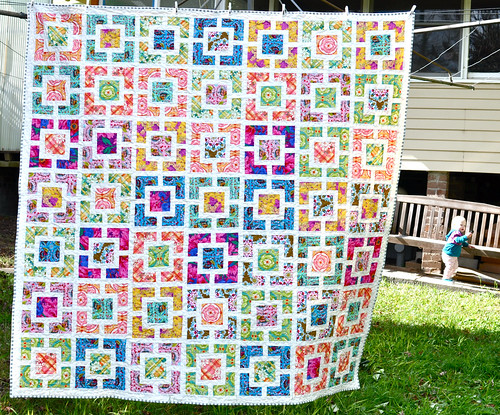
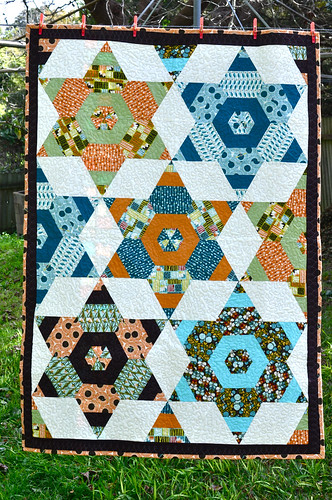
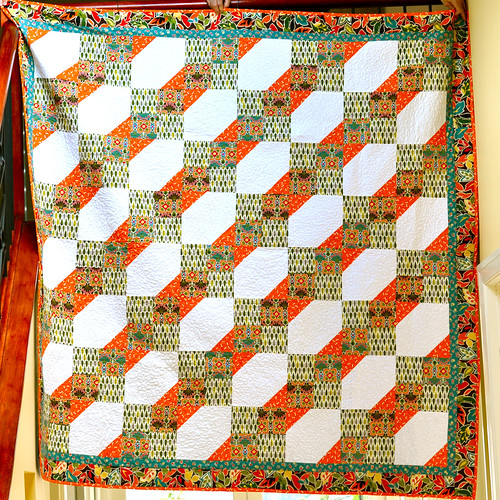
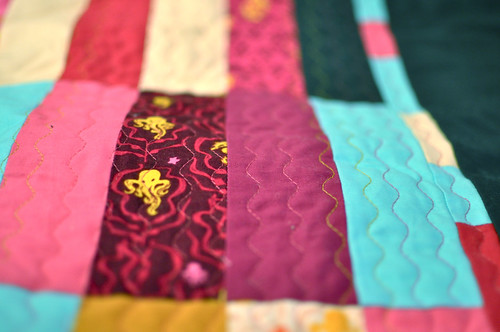
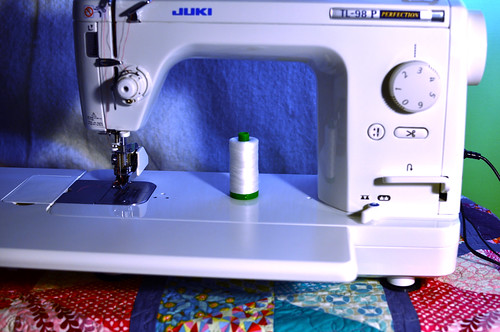
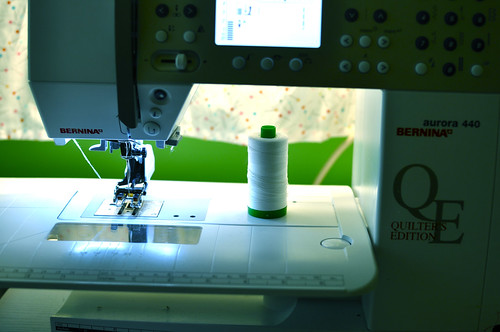
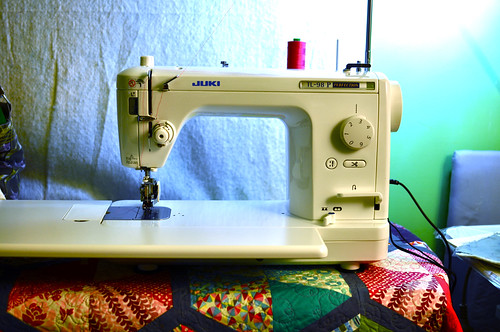
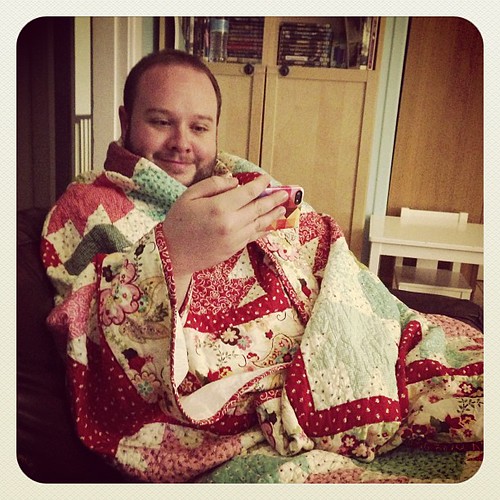
Reader Comments